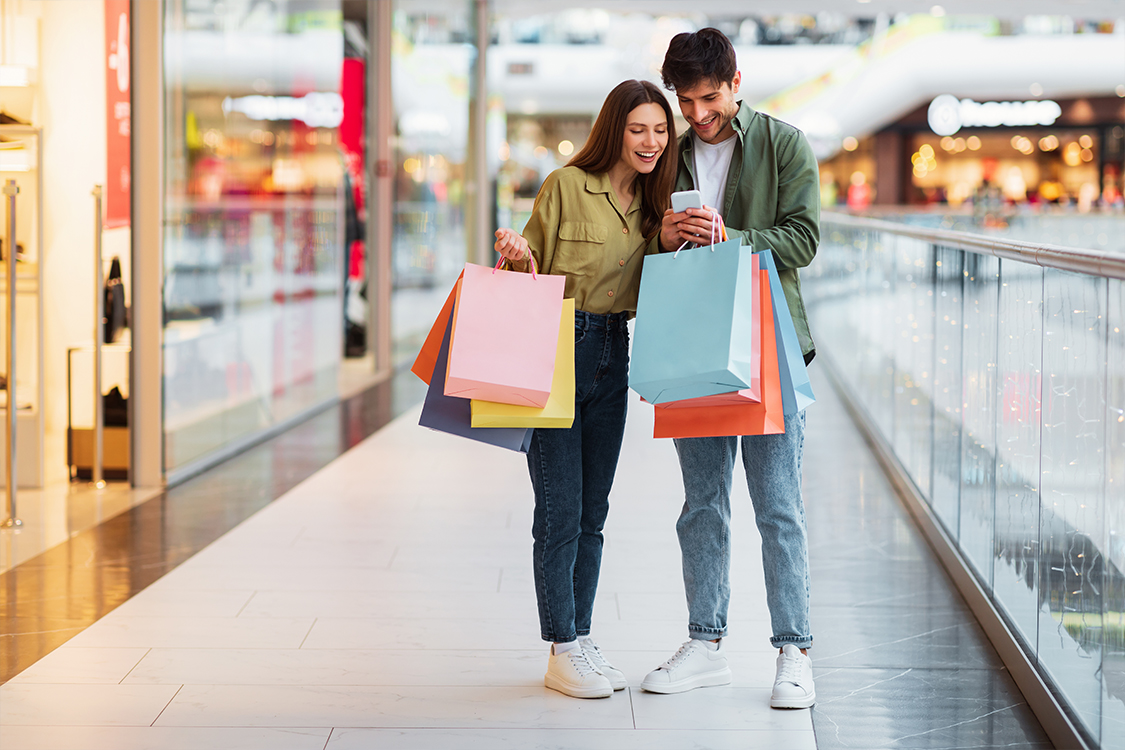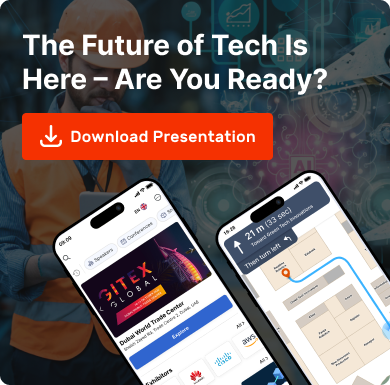Technology Trends

Indoor location-based services are essential tools for both businesses and consumers. In fact, the indoor location-based services market is booming globally and is projected to reach approximately USD 29.8 billion by 2028, according to MarketsandMarkets.
No doubt, this rise is due to advancements made in technology, the rise in smartphone usage and the growing demand for exceptional indoor experiences.
The location-based services market is evolving rapidly, driven by the demand for accurate indoor navigation and seamless user experiences. Businesses are turning to advanced indoor location-based services and indoor positioning and navigation system market solutions to enhance operational efficiency, improve safety and boost customer engagement. With innovations in hardware-free positioning, AR and AI analytics, the indoor location market is expanding across retail, healthcare, campuses and smart buildings. As the indoor location technology market matures, it is unlocking new opportunities in the indoor-outdoor positioning service market, enabling real-time insights and powerful indoor experiences that meet the growing demands of today’s connected world.
Indoor location-based services market is booming globally and is projected to reach approximately USD 29.8 billion by 2028, according to MarketsandMarkets.


7 Most Important Trends in Indoor Location-Based Services
Let’s take a look into the 7 most important trends in indoor location-based services that are shaping the indoor positioning system market and driving innovation in location-based services.
1. Hardware-Free Technology: The New Standard in Indoor Navigation
Imagine providing seamless navigation within your facility not only for your staff but customers too without the need for additional hardware like Wi-Fi or beacons. Mapsted provides this hardware-free technology, using advanced data fusion and AI algorithms to deliver the reliable and precise location services using only just regular smartphones. The benefits of hardware-free location solutions are clear: a significant reduction in installation and maintenance costs, while offering an efficient, low-overhead solution for comprehensive coverage. The elimination of hardware requirements simplifies system management for facilities teams, ensuring continuous, uninterrupted service.
Mapsted‘s hardware-free indoor navigation technology is setting a new standard, as proven by their ambitious project with the National Strong Museum of Play. This project transformed the wayfinding experience within the museum, significantly improved visitor satisfaction and streamlined operational efficiency. This technology not only minimizes costs but also maintenance efforts too, making it a perfect solution for businesses looking to amp up their indoor navigation capabilities. Watch an informative testimonial video from the National Strong Museum of Play’s indoor navigation implementation here.
Benefits:
- Precise accuracy and minimal maintenance
- Cost-effective implementation
- Seamless integration with existing systems
Applications: Shopping malls, office complexes, healthcare facilities, higher education facilities and more.
2. Augmented Reality (AR): The Visual Navigator
AR technology is changing how businesses across various sectors engage with their customers. Let your visitors receive real-time, interactive information or guidance within your venue, be it a bustling airport, huge hospital complex, vibrant museum. AR provides an interactive, dynamic experience, and it’s similar to having a personal guide at their fingertips. Nike, for example, has placed AR mirrors in some stores in the U.S. that allows shoppers to “virtually try on products, create and share content, and learn more about the products.”
By leveraging this technology businesses across various different industries can create unforgettable experiences that differentiate their brand, promote customer loyalty, customer satisfaction and ultimately drive key performance indicators such as user satisfaction, visitor engagement and increased sales.
Benefits:
- Enhances user experience
- Intuitive navigation
- Personalized experience
- Better engagement and dwell time
Applications: Indoor navigation in airports, healthcare facilities and malls, interactive museum exhibits and AR-powered retail shopping.
3. AI-Powered Analytics: Insights for Smart Business Decisions
AI acts like a detective, analyzing data about where people visit inside the store. By understanding how customers move around your place and where they spend their time mostly can help retailers to improve their store layout, customer satisfaction rate, make operations more efficient and create personalized deals. With the power of operations better choices can be made that can benefit both the shoppers and business. This represents a key location-based services trend. For example, Zara implemented AI-powered analytics to optimize their store layouts, customer behaviours and for more efficient supply chain management.
Benefits
- Data-driven decision-making
- Personalized experiences
- Improved security
- Streamlined operations
Applications: Customer behaviour analysis in retail, predictive maintenance in industrial facilities, queue management in airports and fraud detection in financial institutions.
4. Indoor/Outdoor Location Fusion: A Seamless Journey
Lost visitors means lost revenue. Ensure a smooth experience from the moment your visitors or customers step onto your space to their final destination within your building. Whether it is finding their way through the hospital complex, locating a specific aisle in a retail space or reaching the right class in a sprawling campus, uninterrupted guidance is key.
This is vital for large, complex venues. For example, the University of Windsor launched Mapsted’s “CampusGo,” a smart campus technology and app that provides precise and convenient wayfinding across the campus. Staff, visitors, and students can easily search and find campus buildings, and classrooms with turn-by-turn directions, improving the overall campus experience without the need for any additional hardware like GPS beacons or Wi-Fi.
Benefits
- Enhanced convenience
- Unified user experience
- Efficient operations
- Increased revenue
- Streamlined navigation across diverse locations
Applications: Comprehensive navigation apps and location-based services marketing campaigns that span indoor and outdoor environments and smart city initiatives.
5. Emergency Management: Improving Safety with Precision
Indoor location-based services are becoming vital in emergency management, providing reliable and precise location data to enhance response times and coordination during emergency or critical situations. For instance, the healthcare industry is increasingly implementing real-time location systems (RLTS) to pinpoint the exact location of staff, patients and equipment, improving emergency response and overall safety. And it is expected to grow from 2.0 billion US dollars in 2023 to 5.8 billion US dollars by 2028.
Benefits
- Better response times
- Enhanced safety
- Better coordination in emergencies
Applications: Real-time location tracking in large public venues, hospitals, campuses, corporate offices for quick emergency response, safety compliance and efficient evacuation.
6. Smart Buildings and IoT: Creating Intelligent Spaces
Iot devices are a bunch of tiny devices such as beacons, sensors and connected devices that work together to collect and analyze information, better space utilization and efficiency. A major example of this is Deloitte’s “The Edge” building located in Amsterdam, which leverages a network of around 28,000 IoT sensors to streamline energy use and have personalized and highly efficient workspace. It has achieved a 30% reduction in energy consumption.
Benefits:
- Optimized space utilization
- Amplified operational efficiency
- Maximized marketing impact
- Achieved safety and compliance excellence
Applications: Real-time heat mapping, personal monitoring badges and real-time asset tracking within facilities.
7. Sales and Marketing Possibilities: Unlocking Business Growth
Indoor location technology isn’t just about finding your way around indoor spaces. It’s about tapping into new indoor location marketing trends by enabling businesses to deliver targeted promotions and advertisements based on precise location data. Location marketing technology uses advanced market segmentation and notification tools to maximize customer engagement and drive revenue growth. This allows businesses to amplify their marketing efforts and have better conversion rates.
Benefits
- Increased sales
- Customer engagement
- Enhanced marketing strategies
Applications: Proximity marketing provides personalized ads to customers based on their proximity within a facility, geofencing targets potential customers with tailored messages as they enter specific areas and location analytics analyzes movement patterns to optimize layouts and strategies for better experiences and increased sales.
Conclusion
The indoor positioning system market is growing quickly because of technological innovations and the demand for seamless and exceptional indoor experiences. These above-mentioned 7 trends are not just reshaping how people navigate and interact with indoor spaces; they are also causing big chances across the entire industries. As the market matures, we can expect even more amazing and impactful applications of indoor location-based services that will improve our daily lives. Ready to discover how Mapsted indoor location services can help you transform your business? Get in touch with us to book the free demo and let us show you the way. If you want to read more about it, check out these: Indoor-Outdoor Navigation: Challenges and Best Solutions for 2025 and Mapsted Location Technology Solutions.
Frequently Asked Questions
Q1. How can AR improve my experience in a large, complex building like an airport?
Ans. AR navigation apps can greatly benefit the airport by offering a more engaging and immersive experience by virtual representations of the physical airport. For example, like guiding you to your gate, shops, or your other points of interest with ease. The market is expected to increase at a CAGR of 28.71% from 2022 to 2027, reaching USD 157.21 billion by 2027.
Q2. How are retailers using AI and indoor location data to enhance customer experiences?
Ans. Retailers are leveraging AI to analyze customer movement patterns, personalize offers based on location and optimize store layouts for a more seamless shopping journey.
Q3. What are the potential benefits of integrating indoor and outdoor location services?
Ans. A unified navigation experience eliminates the need to switch between apps, providing seamless guidance from your starting point outdoors to your final destination indoors.
Q4. How are hospitals using indoor location technology to improve patient care?
Ans. Hospitals are implementing real-time location systems (RTLS) to track medical equipment, patients and staff, leading to improved efficiency, faster response times and enhanced patient safety.
Q5. What is driving the growth of the location-based services market?
Ans. The global location-based services market is expanding due to the increased adoption of smartphones, demand for personalized experiences and growth in smart infrastructure. Innovations in indoor location-based services and indoor positioning and navigation system market technologies are enabling real-time location insights and seamless indoor navigation.
Q6. How do indoor location-based services work without additional hardware?
Ans. Thanks to advancements in the indoor location technology market, platforms like Mapsted deliver precise indoor navigation without the need for Wi-Fi, beacons or Bluetooth. These hardware-free solutions collect data via smartphones to create accurate, low-maintenance location systems.
Q7. What are the applications of indoor-outdoor positioning services?
Ans. The indoor-outdoor positioning service market supports seamless navigation across campuses, malls, airports and hospitals. These services bridge the gap between external GPS-based positioning and complex indoor navigation using hybrid systems for uninterrupted guidance.
Q8. How is the indoor location market helping improve safety?
Ans. The indoor location market plays a crucial role in emergency response by helping organizations track people and assets in real time. Hospitals, universities and corporate buildings are using this data to enhance coordination and reduce response times during critical incidents.
Q9. How can indoor location data improve business performance?
Ans. By using insights from the indoor positioning and navigation system market, businesses can optimize layouts, increase foot traffic and deliver targeted promotions. These insights drive engagement and boost sales, especially in retail and commercial settings.
